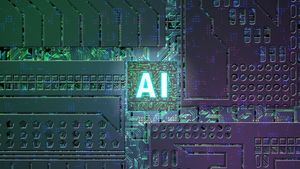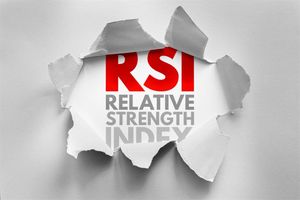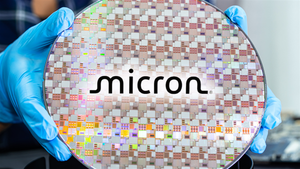
The technological landscape is abuzz with the impending arrival of Windows 11 25H2, a significant update from Microsoft (NASDAQ: MSFT) that promises to redefine the user's interaction with their PC. At the heart of this update is a completely redesigned Start Menu, hailed by many as a substantial upgrade aimed at streamlining program operation and dramatically improving overall user experience. This strategic refinement comes at a crucial time, as the tech industry continues to grapple with evolving user demands and the pervasive integration of artificial intelligence, positioning Microsoft to potentially strengthen its foothold in the competitive operating system market.
This evolution of the Start Menu, expected to roll out in the second half of 2025, represents more than just a cosmetic change; it's a calculated move to make Windows 11 more intuitive, efficient, and deeply integrated with modern digital lifestyles. For financial markets, this could signal a renewed interest in the PC ecosystem, potentially boosting sales for hardware manufacturers and creating new opportunities for software developers who can leverage the enhanced platform. The immediate implications suggest a positive outlook for Microsoft's ecosystem, fostering greater user engagement and potentially driving further adoption of Windows 11.
A Deep Dive into the Windows 11 25H2 Start Menu: Unifying Simplicity with Advanced Functionality
The new Start Menu in Windows 11 25H2 is a testament to Microsoft's commitment to refining its flagship operating system. Moving away from a multi-panel approach, the redesign introduces a streamlined, single-scrollable panel that cohesively integrates pinned applications, recommended content, and a comprehensive list of all installed programs. This eliminates the need for an additional click to access the full application list, a small but impactful change that significantly reduces friction in daily navigation.
A standout feature is the intelligent categorization of installed applications. The "Category" view automatically groups programs into logical segments such as "Productivity," "Games," "Creativity," and "Utilities & Tools," provided there are at least three related applications. This organizational paradigm aims to declutter the user interface and make discovering and launching applications more intuitive. Complementing this is an "Adaptive Design" that dynamically adjusts the Start Menu's layout to suit various screen sizes, offering a more expansive view on larger monitors and a compact, efficient layout on smaller devices. Furthermore, a new "phone companion" panel offers seamless integration with Android and iOS devices, displaying real-time information like battery status and messages, thereby bridging the gap between desktop and mobile experiences. The update is also expected to weave in advanced AI features, further enhancing the menu's capabilities and responsiveness.
The timeline leading to this moment has seen several iterations and previews within the Windows Insider program, allowing Microsoft to gather feedback and refine the user experience. While the 25H2 release itself is considered a minor update, delivered largely via an enablement package, the Start Menu redesign is a key highlight, building upon previous developments. Key players involved are primarily Microsoft (NASDAQ: MSFT) as the developer, alongside its extensive network of hardware partners such as Dell Technologies (NYSE: DELL), HP Inc. (NYSE: HPQ), and Lenovo (HKEX: 0992), who will ship devices optimized for the new OS, and countless software developers whose applications will benefit from the improved discoverability and performance. Initial market reactions have been largely positive regarding the Start Menu's improved organization and cleaner visuals, though some discussions have arisen concerning the current limitations in manual customization of app categories, hinting at a desire for more user control.
Market Movers: Winners and Losers in the Wake of the Start Menu Revolution
The introduction of the enhanced Start Menu in Windows 11 25H2 is poised to create distinct winners and losers across the technology sector, with Microsoft (NASDAQ: MSFT) naturally at the forefront of potential beneficiaries. For Microsoft, a more intuitive and efficient operating system translates directly into increased user satisfaction and potentially higher adoption rates for Windows 11. This, in turn, can bolster their ecosystem, driving revenue from Windows licenses, Microsoft 365 subscriptions, and Azure cloud services, as a more engaging OS encourages deeper integration with Microsoft's broader product suite. The AI integration within the Start Menu also positions Microsoft to further showcase its AI capabilities, potentially leading to increased engagement with other AI-powered features across the Windows platform.
Hardware manufacturers stand to gain significantly from this update. Companies like Dell Technologies (NYSE: DELL), HP Inc. (NYSE: HPQ), and Lenovo (HKEX: 0992) could see a boost in PC sales as users upgrade to devices that can fully leverage the performance enhancements and new features of Windows 11 25H2. The adaptive design of the Start Menu, in particular, could incentivize purchases of new form factors and larger displays, catering to users who seek an optimized visual experience. Furthermore, the push for deeper AI integration might necessitate more powerful hardware, driving demand for new processors and GPUs from companies like Intel (NASDAQ: INTC) and NVIDIA (NASDAQ: NVDA), thereby creating a positive ripple effect throughout the supply chain.
On the other hand, independent software developers who fail to optimize their applications for the new categorized view or leverage the new AI capabilities might find their programs less discoverable or less integrated into the user experience. While the update aims to improve overall app discoverability, developers must ensure their applications are well-categorized and perform efficiently within the new framework. Competitors in the operating system space, such as Apple (NASDAQ: AAPL) with macOS and Google (NASDAQ: GOOGL) with ChromeOS, will undoubtedly be watching closely. While each OS caters to different user bases, a significantly improved Windows experience could influence market share, pushing competitors to accelerate their own user experience innovations to remain competitive.
Wider Significance: Reshaping the Digital Landscape
The revamped Start Menu in Windows 11 25H2 is not an isolated feature but rather a critical piece within a broader industry trend towards more personalized, intelligent, and seamless computing experiences. This move by Microsoft (NASDAQ: MSFT) directly addresses the growing demand for intuitive interfaces that can adapt to individual user habits and integrate effortlessly with mobile devices, reflecting the reality of hybrid work environments and multi-device digital lives. The emphasis on AI integration within the Start Menu itself underscores the pervasive influence of artificial intelligence across all facets of technology, signaling that user interfaces will increasingly leverage machine learning to anticipate needs and streamline workflows.
This strategic update has potential ripple effects across the entire tech ecosystem. For partners, particularly original equipment manufacturers (OEMs) like Dell Technologies (NYSE: DELL) and HP Inc. (NYSE: HPQ), it presents an opportunity to differentiate their products by highlighting the enhanced Windows 11 experience. It could also spur further innovation in touch-enabled devices and larger displays, as the adaptive Start Menu design truly shines on diverse form factors. For competitors, this move by Microsoft will likely intensify the race for superior user experience. Apple (NASDAQ: AAPL) and Google (NASDAQ: GOOGL) will need to continue pushing the boundaries of their respective operating systems to maintain their competitive edge, especially in areas of cross-device integration and AI-driven personalization.
From a regulatory perspective, Microsoft's continuous efforts to integrate more features directly into the operating system, including phone companion functionalities and AI, could draw scrutiny. Concerns about ecosystem dominance and fair competition, similar to historical antitrust cases, might resurface if these integrations are perceived to disadvantage third-party developers or competing services. Historically, major Windows updates have often led to significant shifts in the PC market. For instance, the transition to Windows 95 and later to Windows XP each spurred massive hardware upgrade cycles. While 25H2 might not be as revolutionary as those earlier updates, the Start Menu's refinements, coupled with deeper AI, could trigger a more subtle but sustained upgrade cycle, particularly for users seeking a more modern and efficient digital workspace.
What Comes Next: Navigating the Future of Windows 11
The immediate future for Windows 11 25H2 will involve a critical period of user adoption and feedback. In the short term, Microsoft (NASDAQ: MSFT) will closely monitor how users interact with the new Start Menu, particularly regarding the customization options and the effectiveness of the AI-driven categorization. Any significant user friction or widespread demand for greater personalization could prompt further refinements in subsequent updates. For hardware partners like Dell Technologies (NYSE: DELL) and HP Inc. (NYSE: HPQ), the coming months will be crucial for marketing new devices that highlight the enhanced Windows 11 experience, potentially driving a modest but steady refresh cycle in the PC market.
Longer term, the trajectory of Windows 11 appears to be one of continuous AI integration and ecosystem expansion. The Start Menu's current AI features are likely just the beginning, with future iterations potentially offering even more proactive suggestions, deeper integration with cloud services, and more personalized content delivery. This could lead to strategic pivots for Microsoft, focusing more heavily on AI-as-a-service offerings and further intertwining Windows with its Azure cloud platform. Market opportunities may emerge for developers specializing in AI-powered applications that can seamlessly integrate with the new Windows 11 framework, as well as for accessory manufacturers creating peripherals that enhance the multi-device experience.
Potential challenges include maintaining a balance between innovation and user familiarity, especially if future updates introduce radical changes that disrupt established workflows. The competitive landscape will also remain a significant factor, with Apple (NASDAQ: AAPL) and Google (NASDAQ: GOOGL) continuing to innovate in their respective operating systems. Investors should watch for Microsoft's quarterly earnings reports for insights into Windows 11 adoption rates and revenue growth, as well as PC shipment data from market research firms to gauge the broader impact on the hardware sector. The ongoing evolution of AI capabilities within the OS will also be a key indicator of Microsoft's strategic direction and its ability to maintain its leadership position in the intelligent computing era.
Comprehensive Wrap-up: A Smarter Start for Windows 11
The redesigned Start Menu in Windows 11 25H2 marks a significant and thoughtful evolution for Microsoft's (NASDAQ: MSFT) flagship operating system, aiming to deliver a more intuitive, efficient, and AI-powered user experience. Key takeaways include the transition to a single, scrollable panel that unifies pinned apps, recommendations, and a categorized view of all applications, alongside seamless phone integration and foundational AI capabilities. This update is not merely cosmetic but a strategic enhancement designed to improve program operation and overall user satisfaction in an increasingly complex digital world.
Moving forward, the market is likely to view this update as a positive step for the Windows ecosystem. While the 25H2 release itself is considered minor, the Start Menu's refinements, coupled with deeper AI integration, position Windows 11 as a more competitive and adaptive platform. This could indirectly benefit hardware manufacturers like Dell Technologies (NYSE: DELL) and HP Inc. (NYSE: HPQ) through renewed interest in PC upgrades, and create new avenues for software developers. The emphasis on AI also signals Microsoft's long-term vision for an intelligent operating system that anticipates user needs and streamlines workflows.
Investors should closely monitor Microsoft's progress in rolling out and refining these features, paying attention to user adoption rates and any further announcements regarding AI capabilities. The ability to effectively leverage AI within the core OS will be a critical determinant of Microsoft's continued dominance in the personal computing space. The coming months will provide crucial insights into how this "smarter start" translates into tangible market shifts and sustained growth across the technology sector.
This content is intended for informational purposes only and is not financial advice.

















